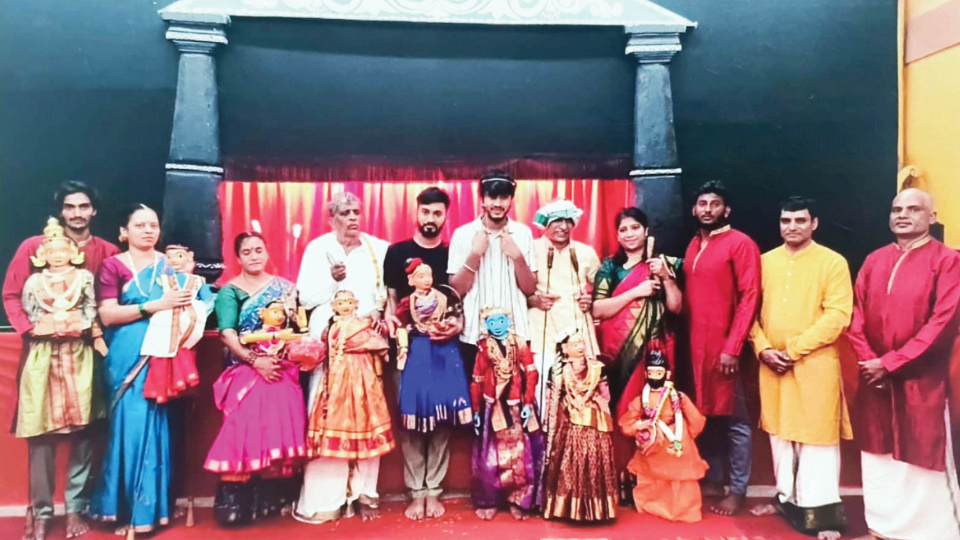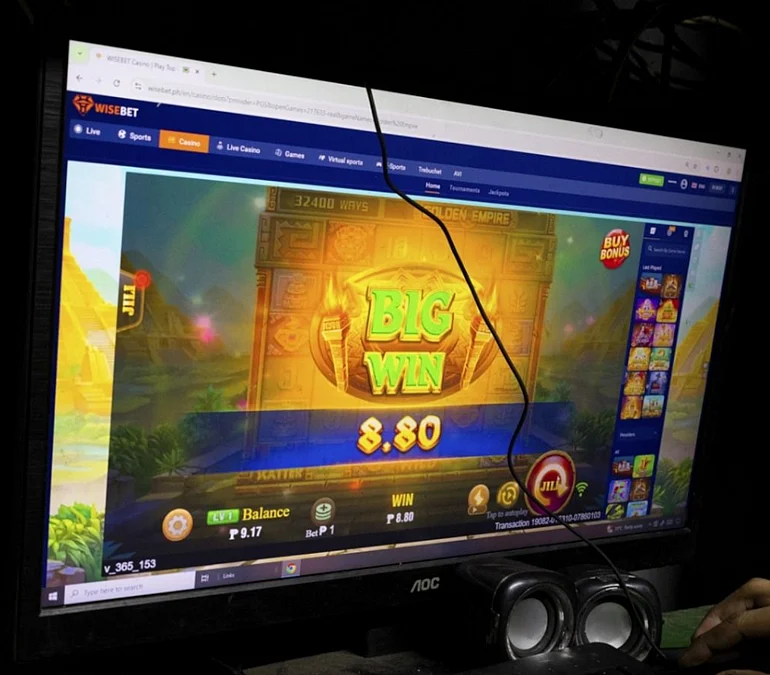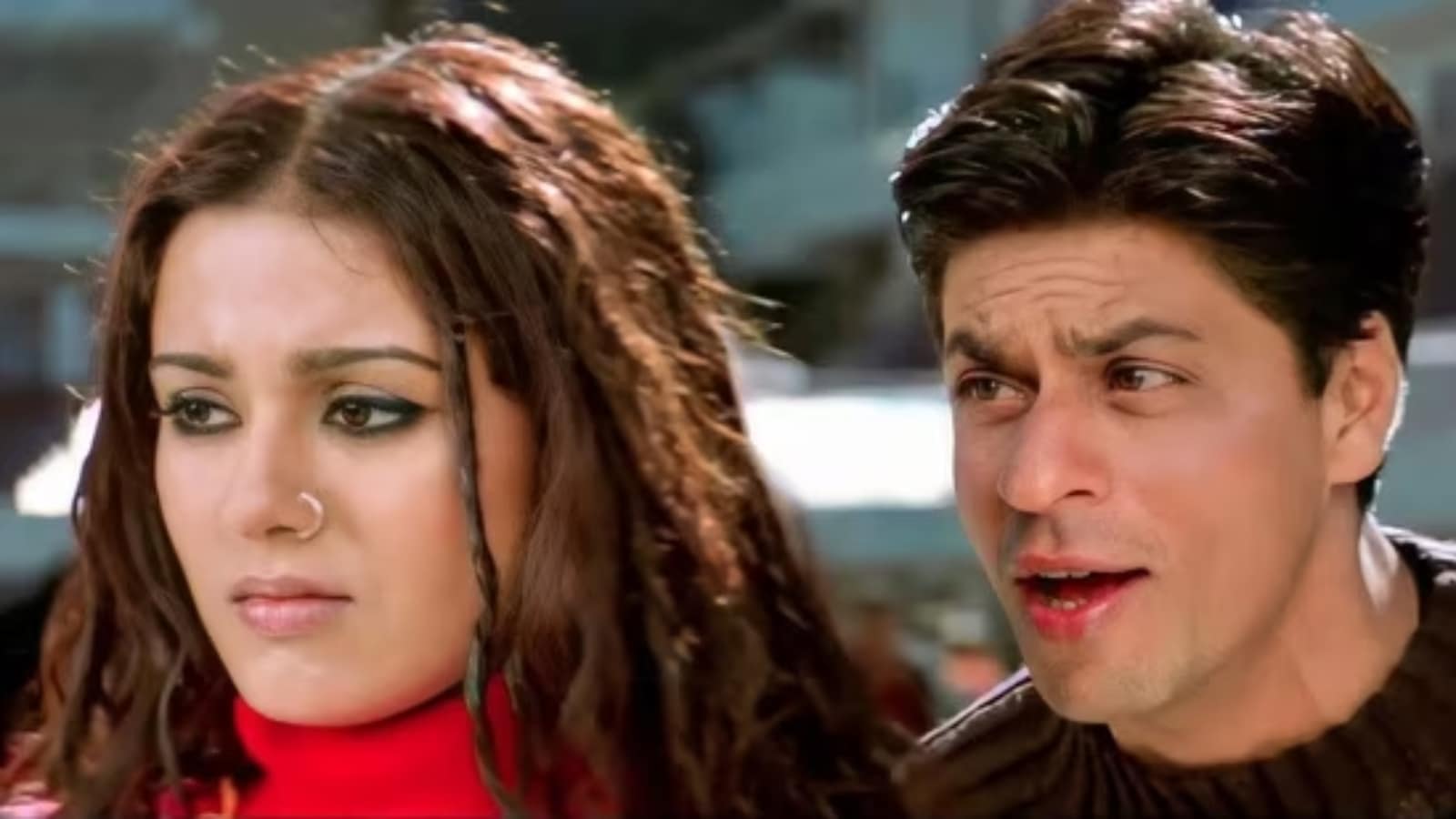By Author
Copyright starofmysore

Mysuru Puppet Theatre’s 10-day shows to revive dying art
Mysuru, Sept. 27 (KS)- Puppetry is more than a form of entertainment — it is a living tradition, with strings attached, that embodies India’s deep-rooted culture, heritage, story-telling artistry and spiritual beliefs.
Tracing its origins to the pre-Vedic period, puppetry has long been an integral part of Indian art and folklore. Among the 64 ancient traditional art forms, puppet shows — known locally as ‘Bombeyata’ or ‘Gombeyata’ — once held pride of place.
Today, performances feature string, rod, shadow and hand puppets, each with its own unique style. In Mysuru, rod puppetry was once a familiar sight during festivals, social gatherings and village fairs, especially during the time of the Princely State of Mysore.
Over the years, however, this vibrant tradition began to fade into obscurity. Determined to revive it, S.N. Srikantha, a fifth-generation puppeteer, has dedicated himself to keeping the craft alive through Mysuru Puppet Theatre (MPT) at Ittigegud.
Strings of tradition
A native of Srirangapatna and a Fine Arts graduate from DMS Lalitha Kala Mahasamsthana Institute in Mysuru, Srikantha wears many hats — he is a rangoli artist, stage decorator for traditional functions and temples and a tour organiser for pilgrimage trips. His journey into puppetry began in childhood when he persistently urged his grandfather, late M.R. Ranganath Rao, a master puppeteer, to teach him the art. After much persuasion, his grandfather relented, passing down generations of knowledge and skill.
In 2019, Srikantha started Mysuru Puppet Theatre in a small 50-seat venue at J.C. Nagar. However, as audiences grew, he shifted to a larger space in Ittigegud near Ramsons Bombe Mane in 2024, which now has a seating capacity of 100, thanks to the support of R.G. Singh of Ramsons.
“Our very first puppet show was staged during ‘Bahuroopi 2019’ and it was the start of a journey to keep this tradition alive,” Srikantha recalled.
The art of puppetry
Puppetry, he explained, is broadly categorised into four types — string puppets or marionettes, shadow puppets often performed by nomadic groups known as Shillekyatha, rod puppets and glove puppets.
Each form draws from local myths, folklore and traditions, reflecting diversity of India’s cultural landscape. At MPT, a dedicated team of ten puppeteers, including four women artists, work alongside Srikantha and his wife Shylaja, handling everything from performances to puppet-making and costume design.
As part Dasara festivities, Puppet Theatre is hosting daily shows from Sept. 26 to Oct. 5 between 5.30 pm and 6.30 pm.
These performances bring to life mythological stories such as Sri Krishna Parijatha, Sri Krishna Tulabhara and Narakasura Vadhe.
Two additional productions — Mysuru Chamundi Katha and Hanumad Vilasa — are being readied and will be staged in the coming days. Tickets are priced at Rs. 150 for adults and Rs. 80 for children.
With each performance, Srikantha and his team are not only entertaining audiences but also preserving a centuries-old tradition, ensuring that puppetry continues to captivate future generations while celebrating Mysuru’s rich cultural heritage.
Schedule and tickets
Daily shows: Sept. 26 to Oct. 5, from 5.30 pm to 6.30 pm at Mysuru Puppet Theatre, Ittigegud.
Current performances: Sri Krishna Parijatha, Sri Krishna Tulabhara and Narakasura Vadhe.
Upcoming shows: Mysuru Chamundi Katha and Hanumad Vilasa to be staged soon.
Ticket prices: Adults – Rs. 150; Children – Rs. 80



